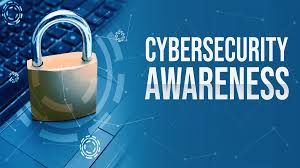Cybercriminals like to go phishing, but you don’t have to take the bait.
Phishing is when criminals use fake emails, social media posts, or direct messages to lure you into clicking a malicious link or downloading a harmful attachment. If you click on a phishing link or file, you might unknowingly hand over your personal information to cybercriminals. A phishing scheme can also install malware onto your device.
No need to fear your inbox, though. Fortunately, avoiding a scam email is easy once you know what to look for. With the right knowledge, you can outsmart phishers every day.
Recognizing the Signs of a Phishing Email
The signs can be subtle, but once you recognize them, you can avoid falling for phishing attempts. Before clicking any links or downloading attachments, take a few seconds (literally 4 seconds!) to ensure the email looks legitimate. Here are some quick tips for spotting phishing emails:
- Does it contain an offer that’s too good to be true?
- Does it include language that’s urgent, alarming, or threatening?
- Is it poorly written, with spelling errors and bad grammar?
- Is the greeting ambiguous or overly generic?
- Does it request personal information?
- Does it stress urgency to click on unfamiliar hyperlinks or attachments?
- Is it a strange or abrupt business request?
- Does the sender’s email address match the company it claims to be from? Look for slight misspellings like pavpal.com or anazon.com.
Uh-oh! I See a Phishing Email. What Should I Do?
Don’t worry—you’ve already done the hard part by recognizing the email is fake.
- If the email came to your work address: Report it to your IT manager or security officer as quickly as possible.
- If the email came to your personal address:
- Do not click on any links or reply to the email—not even the unsubscribe link.
- Simply delete the email.
- Take an extra step and block the sender in your email program.
How to Block a Sender
Here’s how to block a sender on popular email platforms:
- Block a sender on Outlook
- Block a sender on Gmail
- Block a sender on Mac Mail
- Block a sender on Yahoo! Mail
Reporting Phishing Emails
Many email platforms allow you to report phishing attempts. If you suspect an email is phishing for your information, report it immediately.
- For work emails: Let your IT department know about the situation ASAP.
- For personal emails: Follow the platform-specific steps to report phishing:
Another excellent resource is the Anti-Phishing Working Group (APWG), which collects data about phishing attempts. You can send a report to APWG to contribute to their database, helping to prevent phishing and fraud in the future.
Conclusion
Businesses must create awareness among employees to ensure that both the organization and its people are protected against cyberattacks.

 By Emmanuel Coffie
By Emmanuel Coffie 
 Roselyn Rockson
Roselyn Rockson
I truly appreciate your technique of writing a blog. I added it to my bookmark site list and will
Pretty! This has been a really wonderful post. Many thanks for providing these details.
Kaliteli hizmet anlayışı için teşekkür ederim.
Hi there to all, for the reason that I am genuinely keen of reading this website’s post to be updated on a regular basis. It carries pleasant stuff.
Hello,
Thanks for the remark, well noted.
I like the efforts you have put in this, regards for all the great content.
I’m often to blogging and i really appreciate your content. The article has actually peaks my interest. I’m going to bookmark your web site and maintain checking for brand spanking new information.
Hi there to all, for the reason that I am genuinely keen of reading this website’s post to be updated on a regular basis. It carries pleasant stuff.
I truly appreciate your technique of writing a blog. I added it to my bookmark site list and will
Thanks for your kind words.
I appreciate you sharing this blog post. Thanks Again. Cool.
You’re so awesome! I don’t believe I have read a single thing like that before. So great to find someone with some original thoughts on this topic. Really.. thank you for starting this up. This website is something that is needed on the internet, someone with a little originality!
I just like the helpful information you provide in your articles
I do not even understand how I ended up here, but I assumed this publish used to be great
For the reason that the admin of this site is working, no uncertainty very quickly it will be renowned, due to its quality contents.
I’m often to blogging and i really appreciate your content. The article has actually peaks my interest. I’m going to bookmark your web site and maintain checking for brand spanking new information.
I really like reading through a post that can make men and women think. Also, thank you for allowing me to comment!
For the reason that the admin of this site is working, no uncertainty very quickly it will be renowned, due to its quality contents.
Hi there to all, for the reason that I am genuinely keen of reading this website’s post to be updated on a regular basis. It carries pleasant stuff.
This was beautiful Admin. Thank you for your reflections.
I enjoyed the case study — it really brought the theory to life.
Sweet blog! I found it while surfing around on Yahoo News.
Do you have any suggestions on how to get listed in Yahoo News?
I’ve been trying for a while but I never seem to get there!
Thanks https://tichmarifa.blogspot.com/2025/08/blog-post.html
This helped a lot—so does https://pdfpanel.com when working with multiple PDFs.
This cleared up a lot of uncertainty — I feel more confident now.
This really cleared up confusion I had. Much appreciated!
Thanks for the info! I use https://pdfpanel.com all the time.
This blog is such a hidden gem I stumbled upon it by chance and now I’m completely hooked!
For the reason that the admin of this site is working, no uncertainty very quickly it will be renowned, due to its quality contents.
This cleared up a lot of uncertainty — I feel more confident now.
very informative articles or reviews at this time.